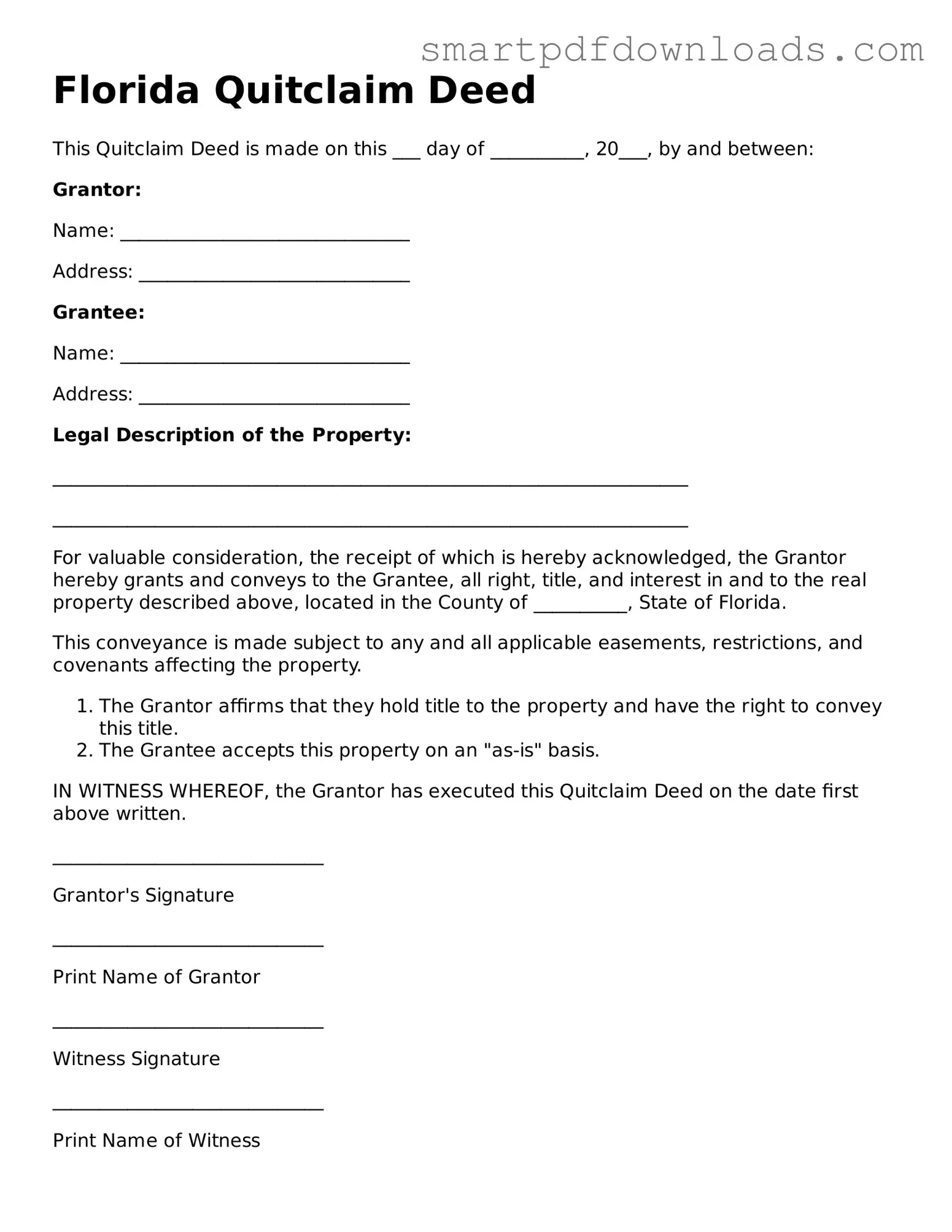Florida Quitclaim Deed
This Quitclaim Deed is made on this ___ day of __________, 20___, by and between:
Grantor:
Name: _______________________________
Address: _____________________________
Grantee:
Name: _______________________________
Address: _____________________________
Legal Description of the Property:
____________________________________________________________________
____________________________________________________________________
For valuable consideration, the receipt of which is hereby acknowledged, the Grantor hereby grants and conveys to the Grantee, all right, title, and interest in and to the real property described above, located in the County of __________, State of Florida.
This conveyance is made subject to any and all applicable easements, restrictions, and covenants affecting the property.
- The Grantor affirms that they hold title to the property and have the right to convey this title.
- The Grantee accepts this property on an "as-is" basis.
IN WITNESS WHEREOF, the Grantor has executed this Quitclaim Deed on the date first above written.
_____________________________
Grantor's Signature
_____________________________
Print Name of Grantor
_____________________________
Witness Signature
_____________________________
Print Name of Witness
_____________________________
Notary Public
My commission expires: ______________
This document is to be recorded in the office of the County Clerk in the state of Florida, in accordance with Florida Statutes.
